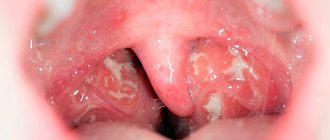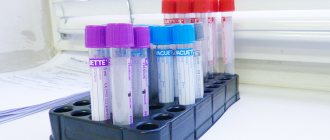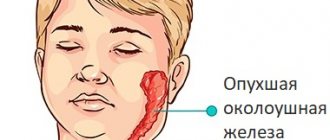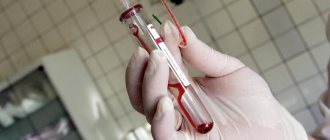Coronary heart disease or IHD is one of the most common and serious cardiac diseases, characterized by unpredictability and severity of manifestations. The victims of this disease most often are men of active age - 45 years and older.
Disability or sudden death is a very likely outcome with ischemic heart disease. In our country alone, about 700 thousand deaths caused by various forms of ischemia are recorded annually. Globally, the mortality rate from this disease is almost 70%. This is why regular monitoring by a cardiologist is so important!
The development of coronary artery disease is provoked by an imbalance between the myocardial need for blood supply and the actual coronary blood flow.
The main reason for insufficient blood supply and oxygen starvation of the heart muscle is narrowing of the coronary arteries due to atherosclerosis (atherosclerotic plaques in the lumen of blood vessels), atherothrombosis and (or) spasm.
The pathological process can affect either one or several arteries at once (multivascular lesion). Significant narrowing of the coronary arteries impedes the normal delivery of blood to the myocardial fibers and causes pain in the heart.
Without proper treatment and medical supervision, coronary ischemic heart disease, caused by a lack of oxygen and nutrients, can lead to myocardial infarction, cardiac arrest and sudden cardiac death.
Classification of IHD in women
Forms of IHD, based on the course of the disease:
- Stage No. 1 – primary. At the initial stage, the disease occurs without symptoms, but the first signs appear after active physical activity. Most often this is a mild pain syndrome in the sternum area.
- Stage No. 2 is characterized by intensification and increased frequency of pain against the background of minor physical movements.
- Stage No. 3 – discomfort occurs while walking, the patient can no longer painlessly climb to the 2nd floor. Feels weak.
- Stage No. 4 – pain in the sternum of a pressing, acute and prolonged nature. It occurs even in a calm state.
Classification by diseases:
- Myocardial infarction , in which myocardial tissue dies (subject to necrosis). The symptoms are pronounced, the pain cannot be eliminated with conventional heart medications. Causes death.
- Another dangerous disease is sudden coronary death . It is asymptomatic and the attack occurs suddenly. Feature – loss of consciousness for a long time (up to 60 minutes). Most often occurs after hypertensive attacks.
- Heart failure occurs against the background of an acute deficiency of blood in the coronary artery.
- Stable or unstable angina. The maximum duration of pain is 15 minutes. With stable angina, pain can be relieved with medications, but with unstable angina, it is impossible. The peculiarity is the spread of discomfort to the neck area.
- With silent ischemia, there are no specific signs.
- Post-infarction cardiosclerosis always manifests itself after a heart attack against the background of scarring of connective tissues that appear on necrotic areas of the heart muscle.
Types of IHD according to WHO
The clinical course, signs and therapy of coronary heart disease largely depend on its form. There are several classifications of this disease, but the most common is the WHO classification, which was approved about 40 years ago, but is still used by cardiologists around the world.
Classification of IHD
Angina pectoris
This term means a type of disease that is manifested by chest pain radiating to the left arm, abdominal area and jaw. Its peculiarity is that attacks occur as a result of physical or emotional stress, do not last long and are stopped with the help of heart medications. Angina pectoris, depending on the characteristics of symptoms, is divided into several types: first-time form, stable, unstable, vasospastic, post-infarction.
Functional classes of angina pectoris
New-onset angina . The disease is usually diagnosed in people over 40 years of age after the first symptoms appear, which last from 4 to 6 weeks. Attacks can occur both after physical and emotional stress, and at rest or even during a night's rest. As a rule, after a few months this form of IHD develops into another - stable, unstable, etc.
New-onset angina
Stable angina . The most common type of disease, which is diagnosed more often than others. Stable angina pectoris manifests itself with classic symptoms (chest pain, breathing problems, arrhythmia) after physical exertion.
Table. Classes of angina pectoris and their clinical course.
| Angina class | Clinical course |
| I | The quality of life of patients practically does not deteriorate, and the symptoms of the disease appear only after prolonged physical activity or heavy exertion |
| II | Seizures develop when the patient needs to walk more than half a kilometer or climb more than one flight of stairs |
| III | Patients with this form of the disease cannot climb even one flight of stairs or walk 500 m. |
| IV | Angina attacks can occur even at rest |
Scheme of an angina attack
Unstable angina . This form of the disease has an unpredictable course, and therefore carries a greater risk of complications than stable angina.
Unstable angina
Progressive angina . Belongs to the category of unstable angina. The key feature is the rapid clinical course, during which the symptoms gradually worsen. A progressive form of the disease can arise from a stable form due to an increase in atherosclerotic plaques or the formation of a blood clot in the arteries. Its development is evidenced by a sharp deterioration in the patient’s condition - attacks become more intense, and medications that previously relieved symptoms stop working. Progressive angina is characterized by excruciating pain, accompanied by vomiting, nausea, and a feeling of suffocation.
ST elevation in acute myocardial infarction
Post-infarction angina . Develops after myocardial infarction and indicates the possibility of relapse.
Vasospastic angina . The cause of the vasospastic form of the disease, which is also called Prinzmetal's angina, is a severe narrowing of the coronary vessels. Attacks can develop at any time (most often in the morning or at night), are not associated with physical activity and are accompanied by severe pain.
Vasospastic angina on ECG
Important! The classification of angina pectoris can be considered conditional, since one form of the disease can manifest itself differently in patients (depending on age, general condition of the body, etc.) and quickly flow into another.
Painless form of ischemic heart disease
This form of IHD is diagnosed in 20-40% of patients and has a poor prognosis, as it often leads to myocardial infarction and death. Its danger lies in the fact that after physical activity, patients do not feel pain, but slight shortness of breath or a disturbance in heart rate, so they attribute the discomfort to fatigue or other factors. The painless form of coronary artery disease is recorded on an ECG, but is often diagnosed accidentally, during routine or preventive examinations. It can either act as an independent pathology or accompany other forms of the disease.
Heart rhythm disturbance
A form of ischemic heart disease that has many manifestations and clinical course options. Its common causes are impaired conduction of impulses in the cardiovascular system and deterioration of blood circulation in large vessels; less often, metabolic or hormonal disorders are the basis of the pathology. It manifests itself in 4/5 patients diagnosed with coronary heart disease and is felt as interrupted heartbeats, freezing or bubbling in the chest.
Heart rhythm disturbance
Myocardial infarction
One of the most dangerous forms of the disease, which develops after prolonged ischemia and is characterized by the death of individual areas of the myocardium. Depending on the degree and scale of damage to the heart muscle, a heart attack can be large or small focal. Large-focal pathology affects the entire muscular layer of the myocardial wall and in 30% of cases leads to death even after timely hospitalization of the patient. A small-focal infarction affects small “islands” of muscle tissue and has a more favorable prognosis, but can ultimately transform into a widespread lesion.
Myocardial infarction
Post-infarction focal cardiosclerosis
During tissue scarring after the development of a heart attack, the affected tissue changes to connective tissue, which cannot ensure the normal functioning of the heart. After this, heart failure develops, and the patient’s well-being and the functioning of the cardiovascular system deteriorate, which is why maintenance therapy is required. According to the WHO classification, post-infarction focal cardiosclerosis is classified as a separate form of IHD.
Post-infarction cardiosclerosis, chronic aneurysm of the anterior wall of the left ventricle
Sudden cardiac death
The most severe variant of coronary heart disease. In this case, death occurs immediately or within 5-6 hours after the onset of the attack. Causes of death are cardiac contractility disorders, arterial blockage, electrical instability of the heart muscle and other defects. Sometimes sudden death of a patient is preceded by heavy physical activity or drinking alcoholic beverages.
Sudden cardiac death
Causes
The main reason for the development of coronary artery disease is blockage of the coronary arteries, which disrupts the blood supply to the heart muscle. The following factors and reasons may precede this:
- Hereditary predisposition in which lipid, protein and carbohydrate metabolism is impaired.
- High levels of low density lipoproteins.
- Diabetes.
- Arterial hypertension and atherosclerosis of the coronary vessels.
- A sedentary lifestyle, which causes congestion and increased stress on the heart.
- Age category over 45 years.
- The presence of bad habits and vitamin deficiency.
- Frequent stress, anxiety, anxiety, depression and any excessive emotions.
- Strength sports.
- Varicose veins, thrombosis, poor blood clotting.
- Poor nutrition – abuse of fatty, spicy and harmful foods, which results in the formation of cholesterol plaques.
- Infection with bacteria such as Helicobacter pylori, cytomegalovirus, etc.
- Obesity.
- Hormonal imbalance.
The risk group includes women with diseases and factors listed in the causes. Namely, alcoholics, diabetics, hypertensive patients, elderly representatives, with an unstable psycho-emotional background, etc.
Prognosis and prevention
Cardiologists note that ischemic heart disease has a poor prognosis . If the patient follows all the instructions, the course of the disease becomes less severe, but it does not disappear completely. Among preventive measures, maintaining a healthy lifestyle (proper nutrition, absence of bad habits, physical activity) is effective.
All persons who are predisposed to developing the disease are recommended to regularly visit a cardiologist. This will allow you to maintain a full quality of life and improve your prognosis.
A useful video about what kind of diagnosis is “coronary heart disease”; all the details about the causes, symptoms and treatment of coronary artery disease are described:
Associated symptoms
With ischemic disease of the heart muscle, the symptoms are indistinguishable from heart pathologies, so it is often impossible to recognize the disease in the early stages. But ischemia is characterized by pain syndromes in the heart area, which radiate to the left arm, neck, shoulder, and back. Attacks of angina and arrhythmia are sure to occur.
These are accompanied by the following accompanying symptoms:
- dyspnea;
- feeling of anxiety, worry, fear;
- nausea and vomiting;
- weakness and malaise;
- decreased performance;
- fainting;
- blood pressure surges (decrease or increase);
- increased sweating, most often cold sweat;
- paleness of the skin;
- numbness in the limbs;
- decreased body temperature;
- heart sinking;
- increased heart rate;
- dizziness.
Pain occurs after physical exertion, psycho-emotional outbursts, and when lifting weights.
Ischemia of the lower extremities
The presented nature of the disease is diagnosed quite often. Typically, ischemia of the lower extremities is manifested by the development of pain syndromes in muscle structures. Discomfort increases in the evening, as well as during night rest. After all, at this time there is no physical activity and damaged tissues are not sufficiently saturated with nutrients and oxygen.
If left untreated, trophic ulcers may form in certain areas of the skin. Most often, such tumors occur on the toes and feet. The patient loses the ability to move normally, which is hampered by the development of pain. The final result may be the need for partial amputation of tissues or the entire limb.
Features of female ischemia
Women suffer from ischemic heart disease almost 2 times less often than men. This is due to the fact that the female body produces estrogens - specific sex hormones (estrons, estriols, estradiols), which are aimed at protecting the walls of the circulatory system from atherosclerotic damage. Ischemia develops in women in a later age category, starting from 45 years of age (in men it can appear in youth).
Features of female ischemia:
- if it is a myocardial infarction, then it manifests itself more acutely than in men;
- high risk of death;
- angina pectoris is present mainly in an unstable form;
- symptoms can manifest themselves even during sleep, that is, there is no diurnal pattern;
- attacks last a long time;
- Heart medications help in rare cases.
In women, other than pain, other symptoms rarely appear or they resemble symptoms of menopause. For these reasons, early diagnosis of IHD is excluded. Exposure to emotional swings plays an important role, which only aggravates the situation and provokes a heart attack.
Preventive actions
Everyone knows that it is much easier to prevent a disease than to make incredible efforts and money to regain health, so you need to pay attention in time to the barely noticeable symptoms of heart pathology and try to prevent their possible worsening.
It is advisable to lead a healthy lifestyle, the main directions of which are:
- Abstinence from smoking (including passive smoking). Interestingly, the possibility of death for those who give up this addiction is reduced by 2 times within 2 years.
- Quitting alcohol consumption or significantly reducing it. In accordance with the recommendations of the World Health Organization, the maximum dose, even if there is no heart disease, is a bottle of dry wine per week.
- Moderate physical activity. In accordance with the development of cardiac ischemia, individual training programs are developed that must be performed. It is important to take walks every day and do simple housework.
- Eat only healthy foods. It is necessary to avoid foods that contain artificial colors and preservatives, fatty, fried, spicy, salty foods, and to minimize the consumption of sweets. The diet for heart pathology should be based on fresh vegetables and fruits, cereals, lean meats and fish.
- Fighting excess weight, especially for patients with cardiac ischemia. Loads should be moderate and agreed with your doctor.
Possible complications and consequences for women
Any dysfunction of the cardiovascular system can lead to death, especially if it is coronary artery disease. Main complications:
- Cardiosclerosis after a heart attack is both a form of the disease and a consequence. Since this condition causes scarring, it can lead to the development of heart failure.
- Chronic heart failure can lead to the death of the patient.
- Acute heart failure develops pulmonary edema.
- Cardiogenic shock is characterized by a sharp decrease in blood pressure, against the background of which blood circulation slows down significantly. Next, dystrophic disorders occur with foci of necrosis in different systems of the body. Against this background, kidney and liver failure, pulmonary edema, and pathological changes in the central nervous system occur.
- Arrhythmic attacks that aggravate the patient’s health condition.
- Sudden cardiac arrest.
New forms of IHD
In 1997, cardiologists at the World Health Organization revised the classification of coronary artery disease and came to the conclusion that there are several variants of the disease that should be distinguished separately from others.
Hibernating myocardium
Due to prolonged or acute ischemia, changes occur in the heart that lead to serious consequences, deterioration of the myocardium and the organ itself. Tissues receive less oxygen and nutrients, which provokes the development of heart failure and ischemic cardiomyopathy. Hibernating myocardial syndrome is a reversible disorder - with appropriate treatment, normal activity of the heart muscle can be restored.
The hibernating section of the myocardium remains viable, but stops contracting. He seems to be balancing between life and death
Syndrome X
This term refers to a group of cardiovascular disorders that are characterized by impaired circulation in the myocardium and the development of corresponding symptoms (weakness, discomfort in the sternum, shortness of breath), but laboratory tests show that the coronary arteries are normal. The causes of syndrome X have not yet been clarified - doctors believe that it is based on a dysfunction of small arterial muscles in the structure of the heart, but this hypothesis needs to be confirmed.
Cardiac syndrome X
Stunned myocardium
The condition occurs when a heart attack occurs due to severe disruption of blood flow, but myocardial cells do not die. Stunned myocardium is a serious disorder, and it poses a particular danger to people whose myocardium does not work well due to the genetic characteristics of the body. With proper treatment, heart muscle function can be restored, but recovery takes several months.
Stunned myocardium
Which doctor is treating you?
A cardiologist treats the heart, but before your first visit, you need to contact your local physician, who will conduct a preliminary examination.
Additionally, depending on the cause of coronary heart disease, the patient may be referred to highly specialized doctors. For example, if you have diabetes, see an endocrinologist.
Cerebral ischemia
If there is a deterioration in the blood supply to areas of the brain tissue, a person begins to suffer from memory loss, regularly feels short of breath, and experiences difficulties in coordinating movements. Also, a consequence of cerebral ischemia is partial dissipation of attention.
The development of cerebral ischemia poses an extreme danger to humans. Because irreversible changes can occur in the cells of this vital organ. When the first signs of illness occur, the patient must be urgently hospitalized. You can count on positive changes in this case only when therapy is carried out in a hospital setting. Only in this way will doctors be able to monitor the patient’s general condition and take measures aimed at slowing the progress of the disease.
Diagnostics
During the initial examination, the doctor collects an anamnesis - interviews the patient about the nature of the pain syndrome and the presence of accompanying symptoms. Be sure to study the history of past illnesses and chronic pathologies. After this, the following diagnostic measures are carried out:
- Blood pressure measurement.
- Electrocardiogram and echocardiography, which will allow a structural study of the condition of the heart.
- To check blood vessels and blood, angiography and coagulogram are prescribed.
- It is imperative to donate blood for general and biochemical indicators, due to which the content of certain substances in the biological material is revealed.
- To assess the level of leukocytes and other substances, urine is collected.
- Additionally, they can perform x-rays, puncture of the thyroid gland, etc.
Diagnosis of coronary heart disease
The success of preventive and therapeutic measures depends on the timely detection of the disease and correct diagnosis.
Of course, the initial stage of diagnosing IHD is the collection and analysis of the patient’s complaints. This is followed by an examination, during which the cardiologist measures the patient’s blood pressure, visually assesses his condition (degree of swelling, skin tone, sweating, behavioral characteristics, etc.), listens to his heart with a stethoscope for murmurs, rhythm disturbances, etc.
Next, the specialist may prescribe the following tests and studies:
- clinical and biochemical blood tests;
- blood test for markers of myocardial infarction;
- electrocardiography (ECG);
- echocardiography (Echo-CG);
- ABPM;
- ECG with stress;
- coronary angiography (x-ray contrast examination of the coronary arteries).
Treatment with traditional methods
In order to minimize the development of complications and eliminate ischemia as quickly as possible, complex therapy is used, which includes taking medications, following a diet, physical activity, etc.
Drug therapy:
- To reduce the heart rate, the cardiologist prescribes beta-blockers. This could be Acridilol, Concor, Betaloc.
- To prevent the formation of blood clots, blood thinners - antiplatelet agents - are needed. Medicines: Clopidogrel, Aspirin, Acecardol.
- Statins and fibrates are used to lower cholesterol levels. The first group includes drugs such as Atorvastatin, Lovastatin, Rosuvastatin. The second includes Traykor, Liponor, Gemfibrozil.
- Nitrates affect the contractility of smooth muscles of the circulatory system: Mononitrate, Isosorbide, Nitroglycerin. The drugs unload the myocardium.
- It is mandatory to take anticoagulants – Heparin.
- Diuretics lower blood pressure and remove excess fluid from the body: Furosemide, Indapamide, Lasix.
- To lower blood pressure, ACE inhibitors are used: Captopril, Enalapril.
Surgical intervention:
- Angioplastic stenting opens a lumen in the coronary artery in places where cholesterol plaques accumulate, thereby restoring the impaired blood supply to the heart muscle.
The operation is performed under anesthesia. After administering anesthesia, the surgeon makes an incision in the artery, inserts a miniature tube and a special balloon, which is inflated. As a result of such actions, a gap opens. Next, the doctor inserts a metal stent and places it in the vein to maintain the vessel in its normal position (so that it does not narrow again).
- Coronary artery bypass grafting involves the creation of a new bypass (vessel). This shunt is installed between the main artery and the coronary artery.
- Artery revascularization - an anastomosis is performed with the internal mammary arteries.
- Heart transplant.
Treatment
The direction of the chosen therapy for cardiac pathology depends on the type and stage of neglect, but there are a number of principles on which it is based.
Treatment of cardiac ischemia with medications. Antiplatelet agents (to reduce thrombus formation), β-blockers (to reduce the force of heart contractions, its frequency, inhibition of cardiac conductivity), and cholesterol-lowering drugs (to reduce cholesterol levels in the blood) are prescribed. Nitrates, diuretics, and drugs against arrhythmia are prescribed if there are no contraindications.
Non-drug treatment of cardiac ischemia includes lifestyle modifications and dietary changes. It is also necessary to reduce the exercise regime, since with physical activity the need for oxygen and blood supply increases. The heart muscle is stressed when there is a significant content of water and salt, so the consumption of these products is limited. To normalize weight and reduce the development of atherosclerosis, you should adhere to a low-fat diet.
Organization of nutrition in cardiac pathology occurs with the aim of maintaining a balance between the energy supplied by food and consumed.
Coronary artery bypass grafting (restoration of the heart muscle through surgery) is performed in the absence of improvement from drug therapy.
Coronary angioplasty (endovascular techniques). It is performed to dilate the blood vessels of the heart.
Folk remedies
Traditional medicine is used as an auxiliary element of treatment. They are aimed at strengthening the myocardium, accelerating blood circulation and improving heart functionality. Recipes:
- The most useful is considered to be a decoction of hawthorn and rose hips. The fruits are brewed in the standard way and taken throughout the day.
- Mix valerian, lemon balm and cumin seeds. For a glass of boiling water you will need 1 tbsp. l. collection Drink 100-150 ml twice a day.
- Garlic helps a lot. To do this, grind 50 grams of cloves, pour vodka (200 ml) and let it brew for 3-5 days. Take a maximum of 7-8 drops per day. The tincture can be added to water or milk.
- Grind 10 lemons along with the zest, add a liter of honey and 5 heads of garlic. Leave to infuse for a week in a dark place. Take two spoons daily on an empty stomach.
- Inhalation. Buy 10 grams of horseradish root, pour boiling water (300-400 ml) in a thermos, let it brew for a couple of hours.
Prevention of coronary artery disease
There are several measures to prevent cardiac ischemia. In the painless form of IHD, they are aimed at inhibiting atherosclerotic phenomena. The main directions for the prevention of ischemia of any degree:
- organizing the correct alternation of rest and work;
- complete cessation of smoking;
- reducing alcohol consumption to a minimum (20 g/day)
- recreational aerobic exercise (running, swimming, aerobics, tennis and others);
- lowering blood sugar and cholesterol levels;
- normalization of eating habits through healthy eating:
- Calculation of daily calories for weight loss.
Prevention measures
To prevent the development of ischemia in women, you need to adhere to the following preventive actions:
- Don't drink alcohol, quit smoking.
- Engage in moderate sports. Walk more in the fresh air. If you can’t go to the gym, go up to your floor on foot, and on weekends go to nature, where you need to spend time actively.
- Eat right.
- Drink enough fluids.
- Avoid stressful situations.
- Fight obesity.
- Treat diseases in a timely manner.
- Consume most meals before lunch. This will reduce the load on the myocardium.
Causes
Ischemia often appears at the age of 40-50 years. About 90% of all registered cases of the disease occur in people who experience progressive narrowing of the walls of the coronary arteries. This usually occurs against the background of developing atherosclerosis.
In addition to the above, ischemia disease can manifest itself in the following cases:
- Severe vasospasm.
- The individual tendency of the body to form blood clots due to deterioration of blood clotting.
- Disorders of the circulation of bodily fluids in the coronary vessels at the microscopic level.
Patient lifestyle
Treatment of coronary artery disease requires patients to pay significant attention to their lifestyle and diet. The second most important point is the person’s adherence to treatment, because the pills must be taken regularly and for a long time. A responsible attitude to doctor's instructions can extend the quality of life by 10-20%. An important step will be normalizing the biological cycle of sleep and wakefulness, giving up tobacco and alcoholism.
During physical and emotional stress, the myocardium has a more difficult time due to the increasing consumption of oxygen fuel. And if there is a mismatch between requests and reserves, a person will develop symptoms of ischemia. Therefore, you need to control your feelings and physical impulses, but do not forget about a healthy body culture.
The principles of the diet will be:
- reducing sodium intake (kitchen salt);
- refusal of animal foods (red meat, especially);
- taboo on smoked, fried and fatty foods;
- exclusion of fast carbohydrates (flour and confectionery).
Excess weight needs to be removed without postponing the matter until later. This is the main condition that will help normalize the condition and reduce the amount of medications required.
Causes and risk factors
In most cases, the causes of ischemia are atherosclerosis of the arteries of varying degrees of complexity, from the presence of plaques to complete blockage of the lumens. In this case, a disease called “angina pectoris” develops.
Also, against the background of atherosclerotic changes, spasms of the coronary arteries may occur, as a result of which the most common forms of coronary artery disease occur - angina pectoris, arrhythmia, hypertension.
Factors contributing to the development of this disease include:
- Arterial hypertension, which increases the chances of ischemia by 5 times.
- Hyperlipidemia causes the development of atherosclerosis and, as a consequence, ischemia.
- Smoking. Nicotine causes a steady contraction of vascular muscle tissue, impairing blood circulation throughout the body.
- Impaired carbohydrate tolerance as a result of diabetes mellitus.
- Obesity and physical inactivity become prerequisites for the development of ischemia.
- Heredity and old age.
Classification
“IHD: what is it?” — a question arises for a person and his relatives if a doctor makes such a diagnosis. To understand what risks a patient faces, it is necessary to refer to WHO recommendations for identifying and systematizing forms of the disease:
- Coronary death or cardiac arrest usually develops suddenly and is an unexpected condition. If such a patient is away from other people and is unable to call for help, sudden death may occur after a heart attack.
- Angina pectoris, which can be stable, post-infarction, spontaneous.
- Painless form of ischemia.
- Myocardial infarction.
- Cardiosclerosis post-infarction.
- Arrhythmia.
- Heart failure.
Chronic form of ischemia
What is chronic ischemia? If the disease develops in this form, there is a gradual, barely noticeable decrease in the level of blood flow in the damaged area of the body. Over time, irreversible changes may occur in limited areas of tissue. However, such pathological processes reach their climax over a longer period compared to ischemia, which occurs in an acute form.
Dyspnea
Shortness of breath is a symptom that feels like a lack of air, the inability to take a deep enough full breath. This type of shortness of breath is called inspiratory shortness of breath (as opposed to pulmonary expiratory shortness of breath with difficulty exhaling). Shortness of breath always indicates some degree of heart failure.
- Dyspnea, the equivalent of angina pain, is often confused with manifestations of circulatory failure. Such shortness of breath is not accompanied by a real shortening of the respiratory act. It stops when the factors that provoke the angina attack are eliminated and can be treated with nitroglycerin.
- Shortness of breath during myocardial infarction is a consequence of acute circulatory disorder. The dead portion of the heart muscle reduces the ability of the myocardium to contract and push blood, which stagnates in the lungs. The plasma sweats into the lung tissue, and pulmonary edema of the interstitial or alveolar type develops. In addition to the feeling of lack of air and shortness of breath, hoarse breathing appears, which bubbles and can be heard at a distance, like heartbeats, and cold sweat. With alveolar edema, a significant amount of pinkish foam appears from the mouth.
- Acute heart failure - if, against the background of a protracted attack of intense chest pain, in addition to shortness of breath and a feeling of lack of air, the veins of the neck are inflated, the nasolabial triangle and limbs turn blue, pulsation appears in the epigastrium - a complication of a heart attack is likely, such as acute failure of the right ventricle of the heart.
- Chronic heart failure is manifested by shortness of breath with weakness of the right side of the heart. In this case, shortness of breath is combined with episodes of coughing with scant sputum. The patient has to sleep on a higher pillow, or even take a forced sitting position. Patients have pale bluish skin, bluish fingertips, and nasolabial triangle. Shortness of breath may give way to an episode of suffocation.
Measures to prevent ischemia
Prevention of ischemia is a set of measures that eliminate risk factors for the occurrence of the disease and prevent complications. First of all, this means changing your lifestyle and following simple rules:
- You should not drink alcohol in large quantities, and you should give up cigarettes altogether.
- You should not worry or get irritated over trifles - you should avoid stress and excessive emotional tension.
- Physical activity cannot be avoided - it must be strictly dosed and include regular cardio training, swimming, gymnastics, etc.
- You should not eat junk food (fried, spicy, salty) - you should include more cereals, fish, fruits and vegetables in your diet.
- You can’t overeat – you need to maintain optimal body weight and prevent obesity.
Compliance with the above recommendations will minimize the risk of ischemia, even if there is a genetic predisposition.
Ischemia is very dangerous and can lead to serious complications. However, if the patient complies with all the doctor’s instructions regarding treatment and preventive measures, this will certainly protect him from myocardial infarction and other serious consequences. Not a single remedy can protect against ischemia unless the patient changes his habits and chooses a healthy lifestyle.
Edema
Also a sign of acute or chronic heart failure. They occur acutely with a heart attack, chronically - with cardiac arrhythmias, post-infarction cardiosclerosis. The most typical swelling is due to stagnation in the systemic circulation against the background of weakness of the left ventricle of the heart.
- First, pastyness of the feet appears, which is replaced by swelling of the legs and legs, and as the process progresses, of the hips.
- Subsequently, the genitals and the anterior abdominal wall swell. Massive swelling, called anasarca, may also develop.
- A rapid increase in body weight (daily) indicates hidden edema located in the fatty tissue of the internal organs.
- Swelling of the kidneys leads to a decrease in urine output.
- Against the background of edema, the liver becomes large and dense, protrudes from under the costal arch and can hurt during exercise.
- Swelling increases in the second half of the day and is difficult to respond to isolated treatment with diuretics.
- Increasing stagnation of blood can create difficulties with cerebral circulation, which leads to memory, thinking, and sleep disorders.
Heart failure is divided into functional classes, which make it possible to assess resistance to stress, select therapy and make a prognosis for the future.
- Functional class 1 allows you to tolerate the full volume of usual loads. Increased load is manifested by shortness of breath.
- Class 2 gives shortness of breath or palpitations only during exertion (no manifestations at rest).
- Class 3 – the appearance of manifestations with minimal loads and their absence at rest.
- Grade 4 gives symptoms at rest.
Clinic of the disease
Manifestations can appear complexly or separately, depending on the form of the disease. There is a clear relationship between the development of pain localized in the heart area and physical activity. There is a stereotype of their occurrence - after a rich meal, under unfavorable weather conditions.
Description of pain complaints:
We talked in more detail about the symptoms of coronary heart disease, including differences in symptoms between men and women and risk groups, in a separate article.
A specialist who can help with the development of all the conditions discussed is a cardiologist. Prompt access to medical attention can save lives.
Dependence of symptoms on the type of ischemia
Signs of beginning dysfunction have the following manifestations: pain behind the sternum, squeezing or pressing, which radiates to the neck, lower jaw, left arm, back, stomach. The sick person experiences lack of air.
The concept of coronary artery disease unites pathological conditions of the heart, which have their own symptoms and special treatment. To establish the clinical picture, the intensity and nature of the attacks caused by the type of ischemic lesion are taken into account.
Diagnosis
Before treating IHD, the cardiologist prescribes a series of diagnostic measures aimed at identifying the form and stage of the disease.
How is ischemia diagnosed:
- Taking an anamnesis: clarifying complaints and determining the causes leading to the onset of the disease, the presence of cardiovascular diseases in relatives.
- Initial examination: heart murmurs are listened to, the presence of wheezing in the lungs is determined, the presence of edema is checked, pressure is measured.
- Prescribing blood and urine tests. Studies of indicators make it possible to establish signs of coronary heart disease, detect possible complications and prerequisites for the occurrence of the disease.
- Electrocardiogram: determines the electrical activity of the heart, identifies disturbances in the functioning of the myocardium. If ischemia manifests itself exclusively during exercise, a stress ECG is prescribed: the patient performs certain physical efforts, and the device simultaneously records heart function indicators.
- Echocardiogram. Ultrasound waves help to study the work of the heart muscle in real time: study blood flows inside the heart, assess the condition of blood vessels, and identify a possible heart attack. An echocardiogram, just like an ECG, can be performed under stress.
- Coronary angiography: evaluates the condition of the myocardium and vascular obstruction by injecting a special dye into the vessels. The procedure can cause complications, so it is usually performed when there are indications for surgery.
- MRI and computed tomography: allows you to more accurately assess the condition of the coronary arteries.
- Holter monitoring: detects cardiac muscle disorders over time. The patient wears a special device throughout the day that records changes in the functioning of the heart under natural conditions, which allows for faster identification of the prerequisites for the occurrence of pathology.
After the examination, a diagnosis of “coronary heart disease” is not made - there must be a decoding of the disease: IHD: exertional angina, IHD: myocardial infarction, etc.
Drug therapy
Rehabilitation when diagnosing ischemia involves the use of complex therapy. Depending on the severity of the disease, both conservative and surgical treatment methods can be used. The need for hospitalization of a person is determined individually.
If we talk about drug therapy, in this case the patient may be prescribed the following medications:
- “Isoket”, “Nitroglycerin”, “Nitrolingval” - taking medications has a positive effect on increasing the lumen of the coronary arteries.
- “Metopropol”, “Atenolol” - make it possible to eliminate the effect of accelerated heartbeat, reduce the need for myocardial tissue to be saturated with an abundance of oxygen.
- “Verampil”, “Nifediprin” - lower blood pressure and make myocardial tissue more resistant to physical stress.
- “Aspirin”, “Heparin”, “Cardiomagnyl” - thin the blood structure and help improve the patency of the coronary vessels.
Taking the above drugs seems to be an effective solution for diagnosing ischemia in the early stages of development. Naturally, the use of such medications is reasonable only after consultation with a specialist.
Surgery
If the use of pharmacological agents gives insignificant results, and the disease continues to develop progressively, then a surgical solution to the problem cannot be avoided. In order to relieve the area of tissue ischemia, doctors can resort to the following surgical methods:
- Coronary bypass surgery - the solution makes it possible to saturate the affected area of tissue with blood by creating a bypass path. In this case, internal arteries or superficial veins on the patient’s body can serve as shunts.
- Angioplasty is an operation that allows you to restore the previous patency of damaged coronary vessels due to the introduction of a metal mesh conductor into the tissue.
- Laser myocardial revascularization is a method that acts as an alternative to coronary bypass surgery. During the operation, the surgeon creates a network of very thin channels in the damaged tissues of the heart muscle. A special laser device is used for this.
As practice shows, high-quality operation allows a patient with ischemia to return to the usual rhythm of life. This reduces the likelihood of developing heart attacks and disability. In some cases, surgery is the only option that allows the patient to avoid death.
IHD prognosis
The outcome of the disease depends on many different factors (the general health of the patient, his age, the presence of chronic diseases, the degree of neglect of ischemia, the timeliness of treatment, and a number of others).
The prognosis becomes unfavorable if complications of coronary artery disease such as arterial hypertension, diabetes mellitus, and severe lipid metabolism disorders develop. In this case, therapy can only slow down the progression of the disease. It will no longer be possible to completely cure IHD.
Diagnostic methods
Diagnosis of IHD is based on the following examinations:
- Collecting anamnesis (life, family, illness and complaints). The doctor conducts a detailed survey of the patient: when and how long ago the pain began, discomfort, its duration, location, nature. Find out if there are interruptions in rhythm, shortness of breath, or weakness. The patient must tell what medications he took and what the results were. Risk factors are identified.
- Examination by a cardiologist . The doctor measures the pressure level and listens to the heart for murmurs and wheezing. Reveals signs of hypertrophy - an increase in the size and weight of the right and left ventricles, insufficiency of its contractility, atherosclerosis of various areas.
- General blood test (+ biochemistry) and urine - allows you to identify the possible cause of ischemia, complications, the actual level of cholesterol, triglycerides, which is important for assessing the risk caused by vascular atherosclerosis.
- A test for troponins in the blood is necessary if a heart attack is suspected or in case of acute coronary syndrome. When heart cells are destroyed, specific enzymes are released into the blood.
- Coagulogram - with ischemic heart disease, blood clotting increases.
According to the plan, the patient receives a set of stress tests (physical, radioisotope, pharmacological), undergoes examinations using the X-ray contrast method, computed tomography of the heart, electrophysiological study, and Doppler sonography.











